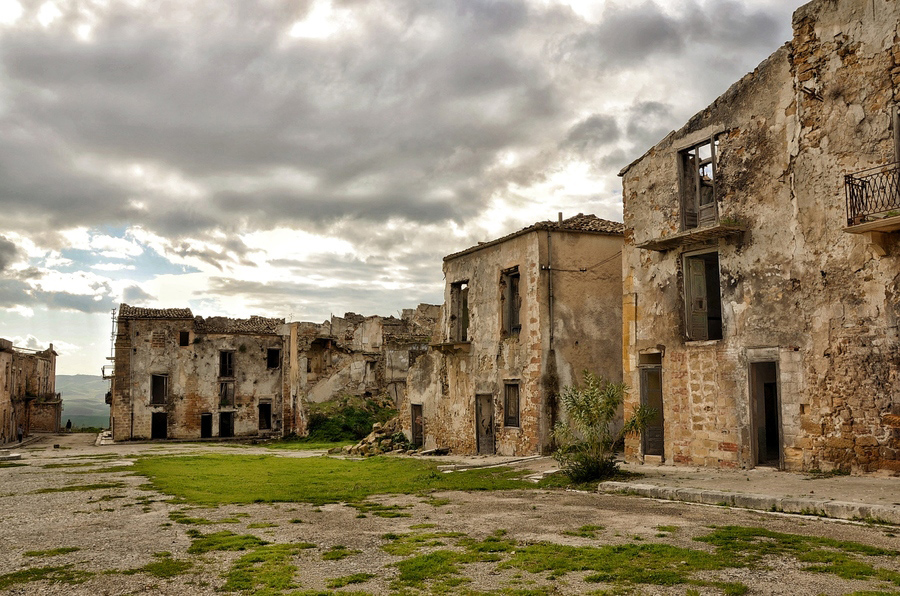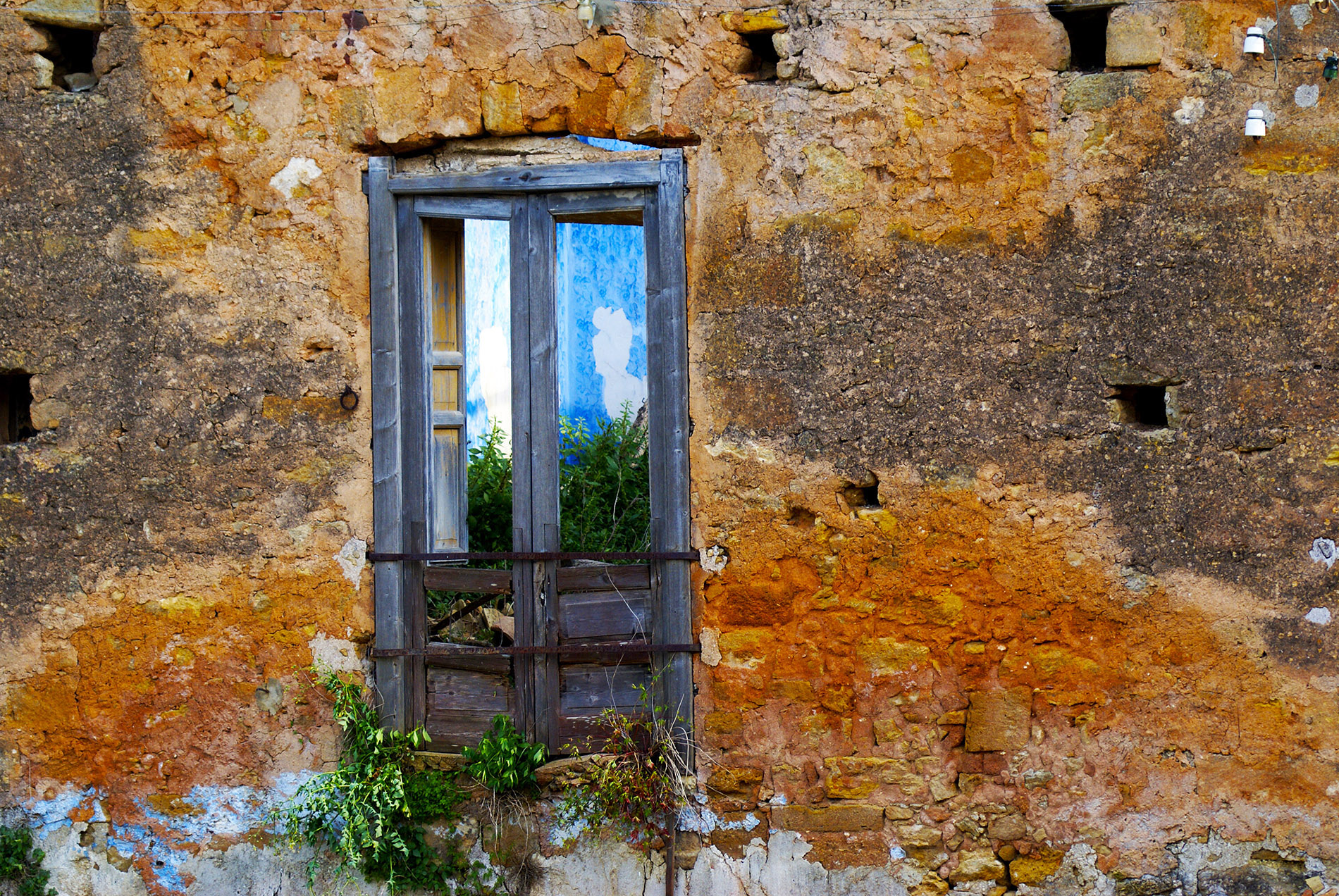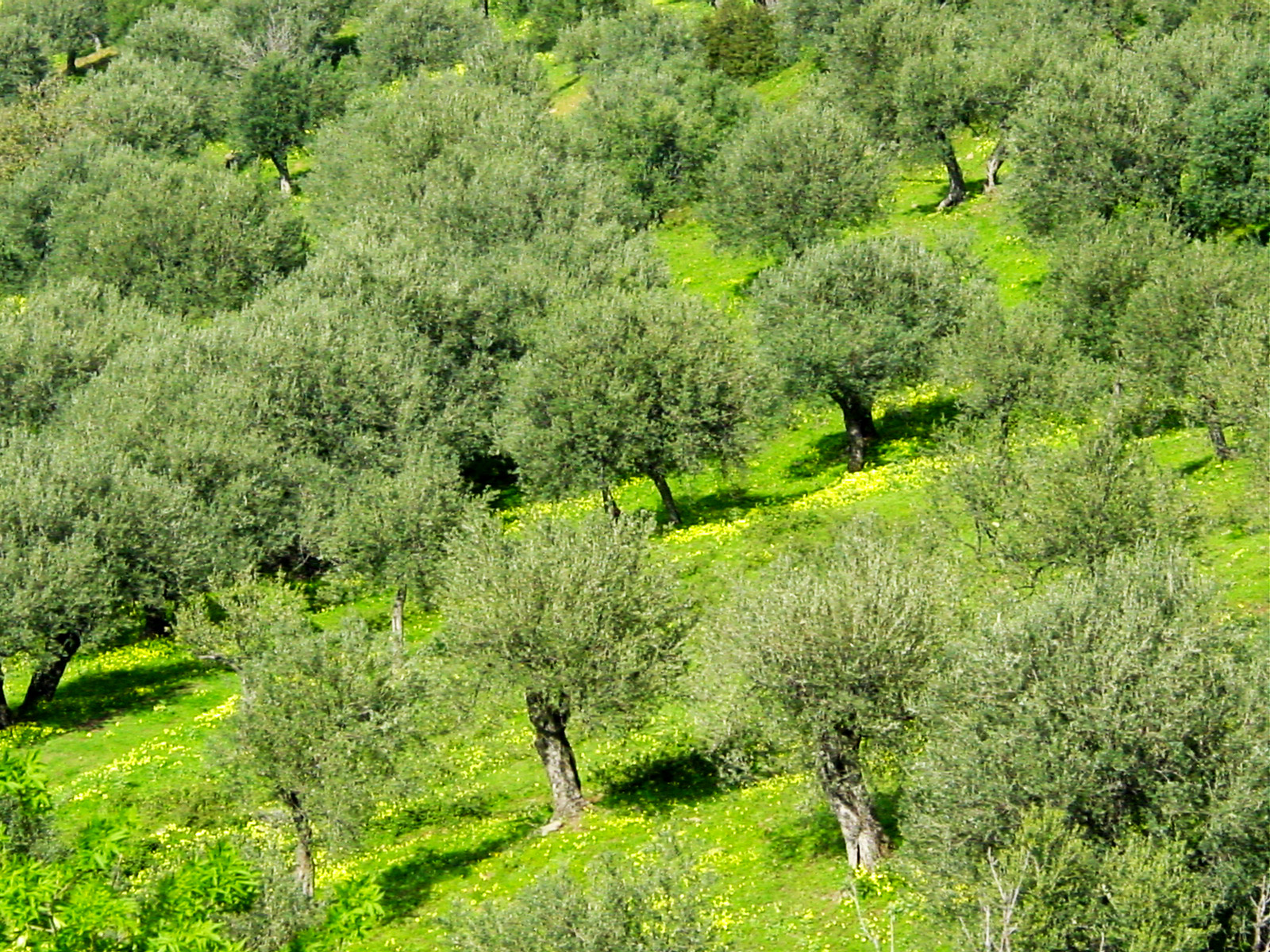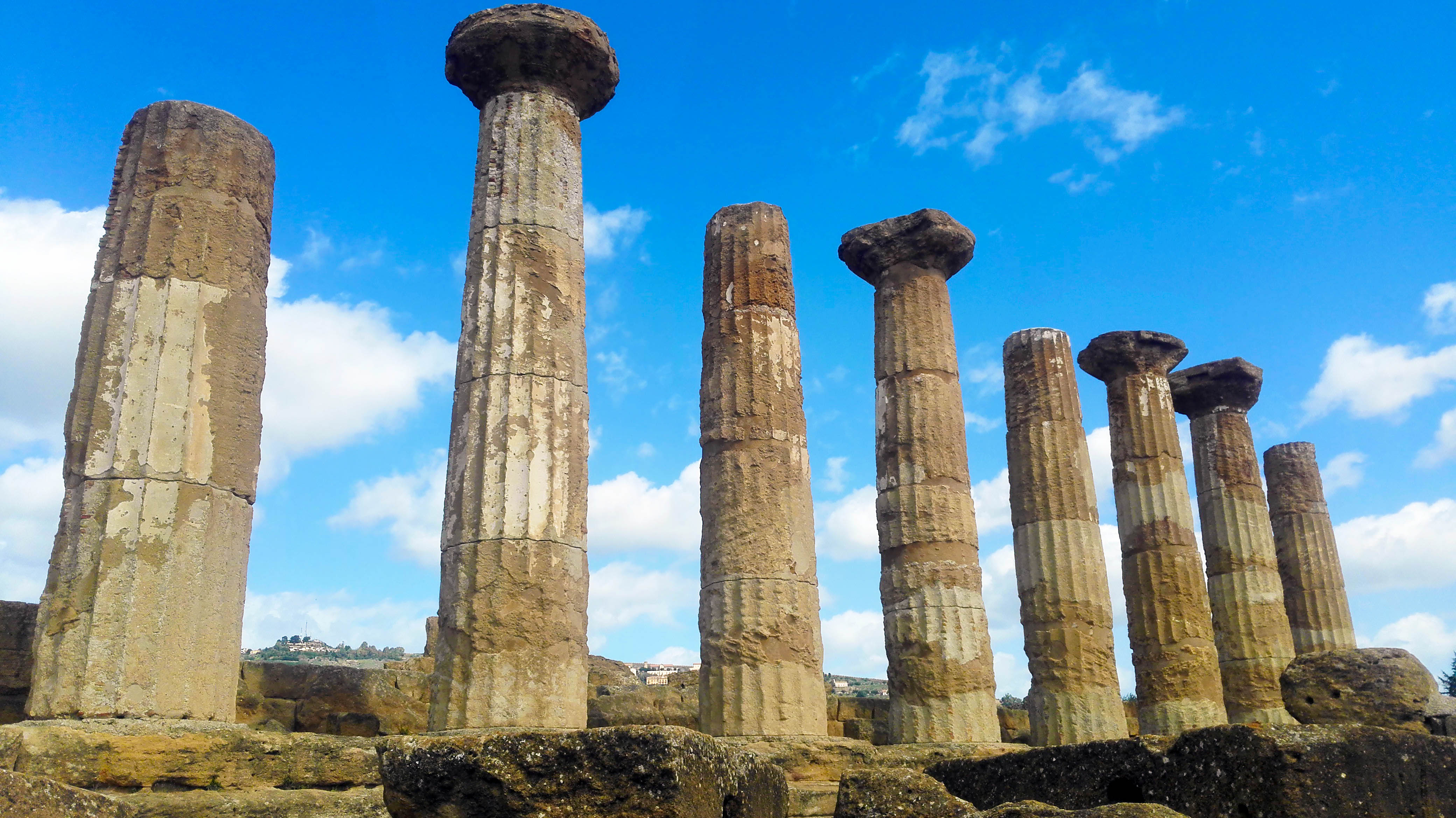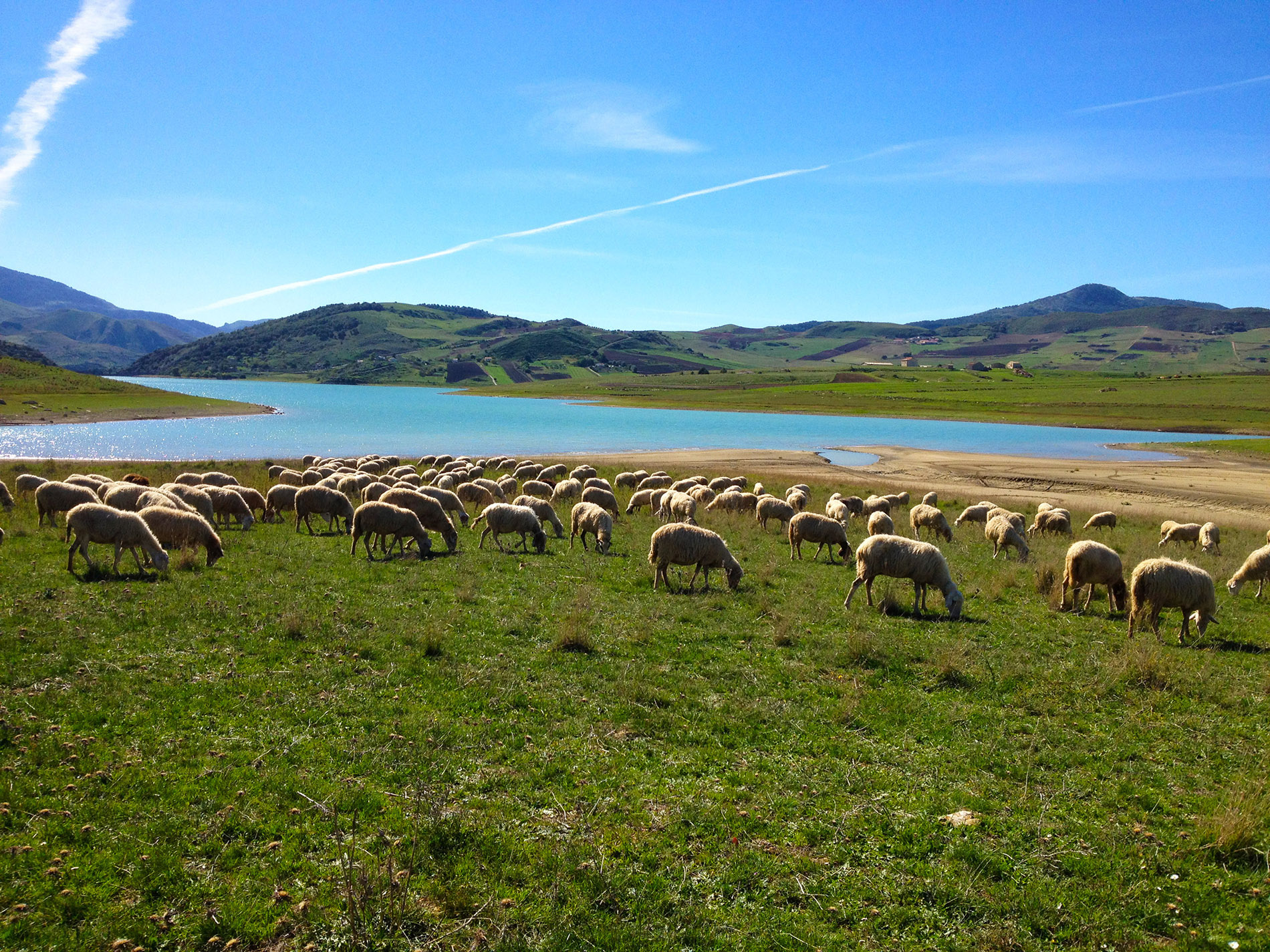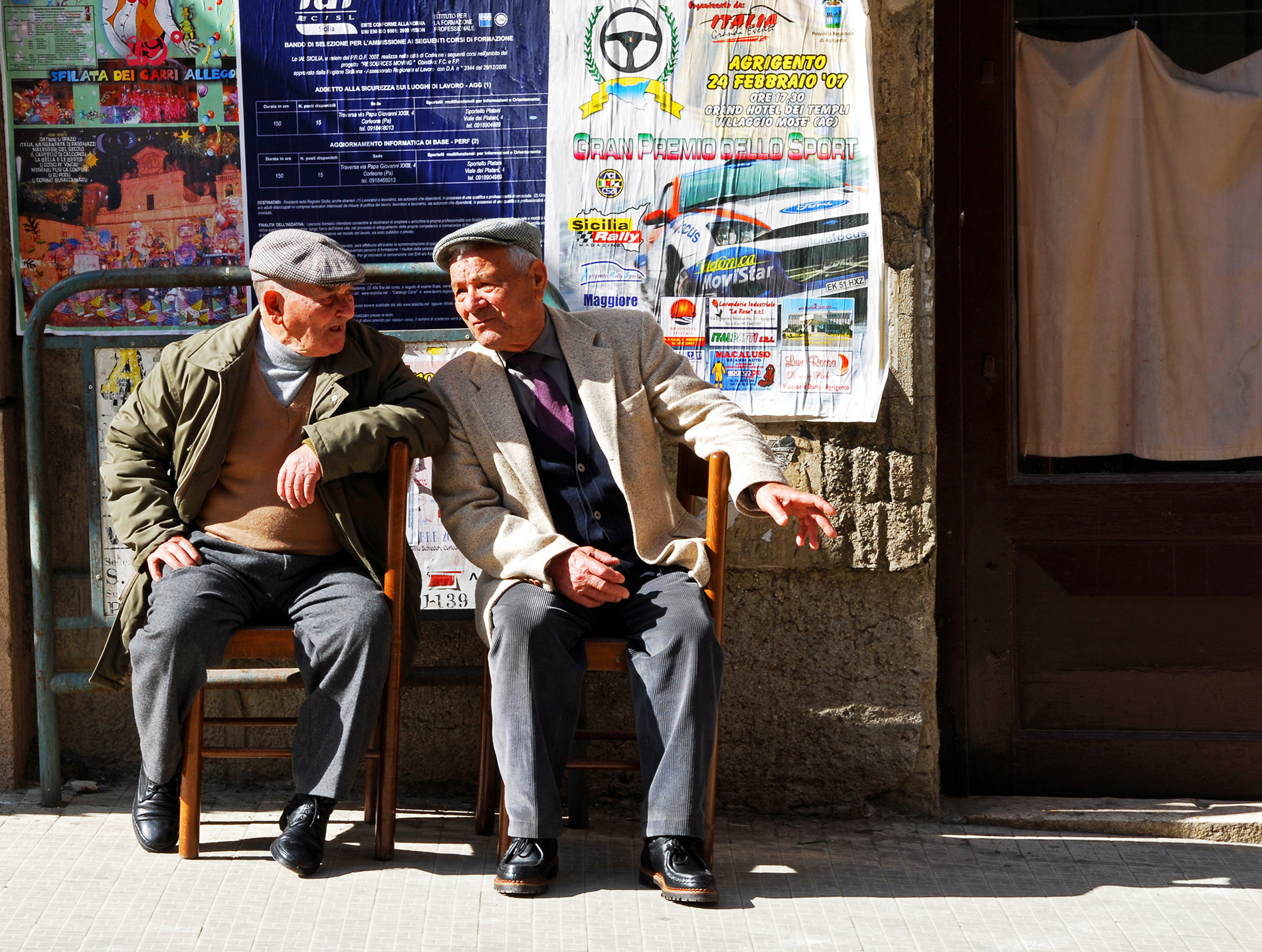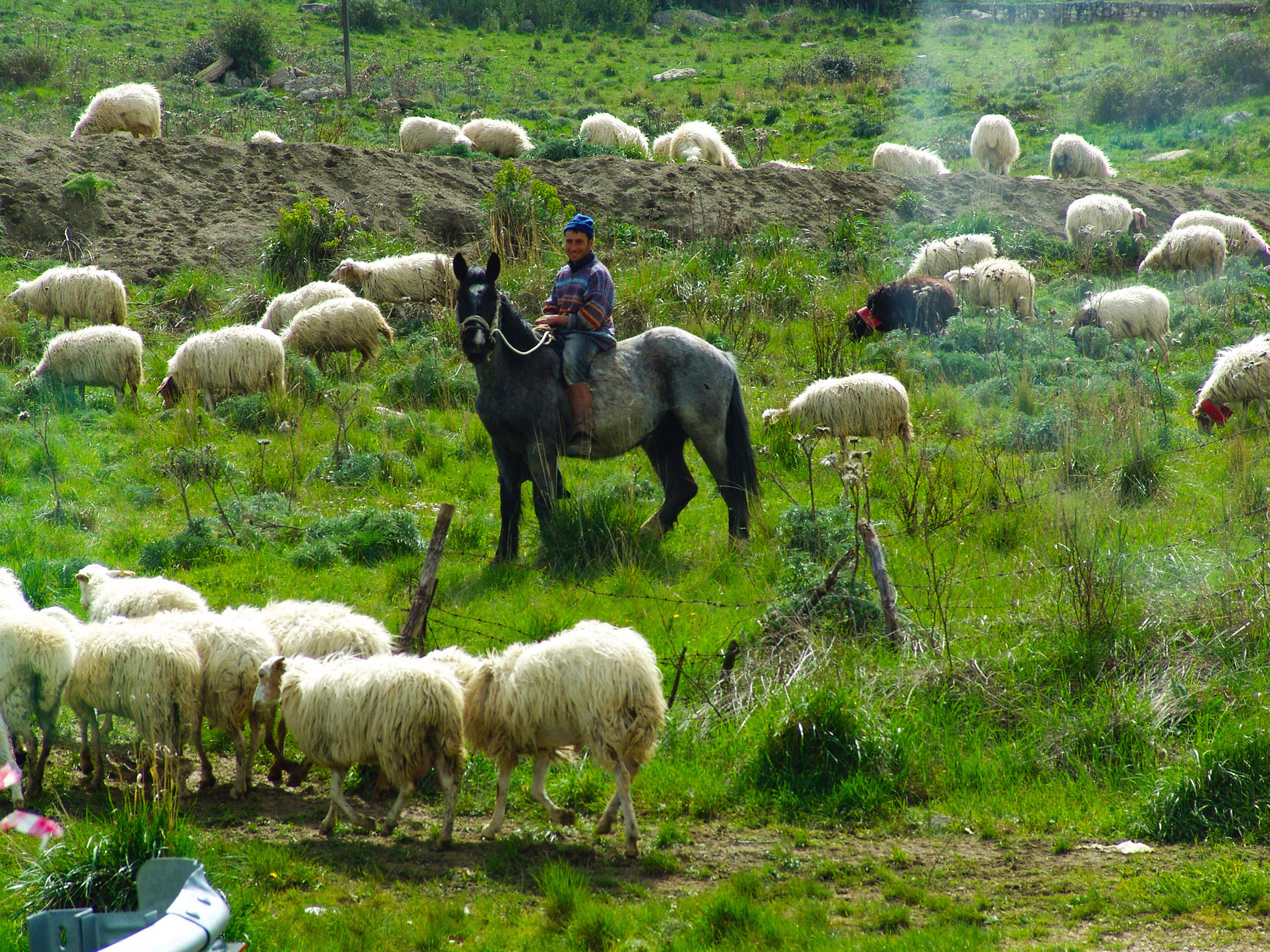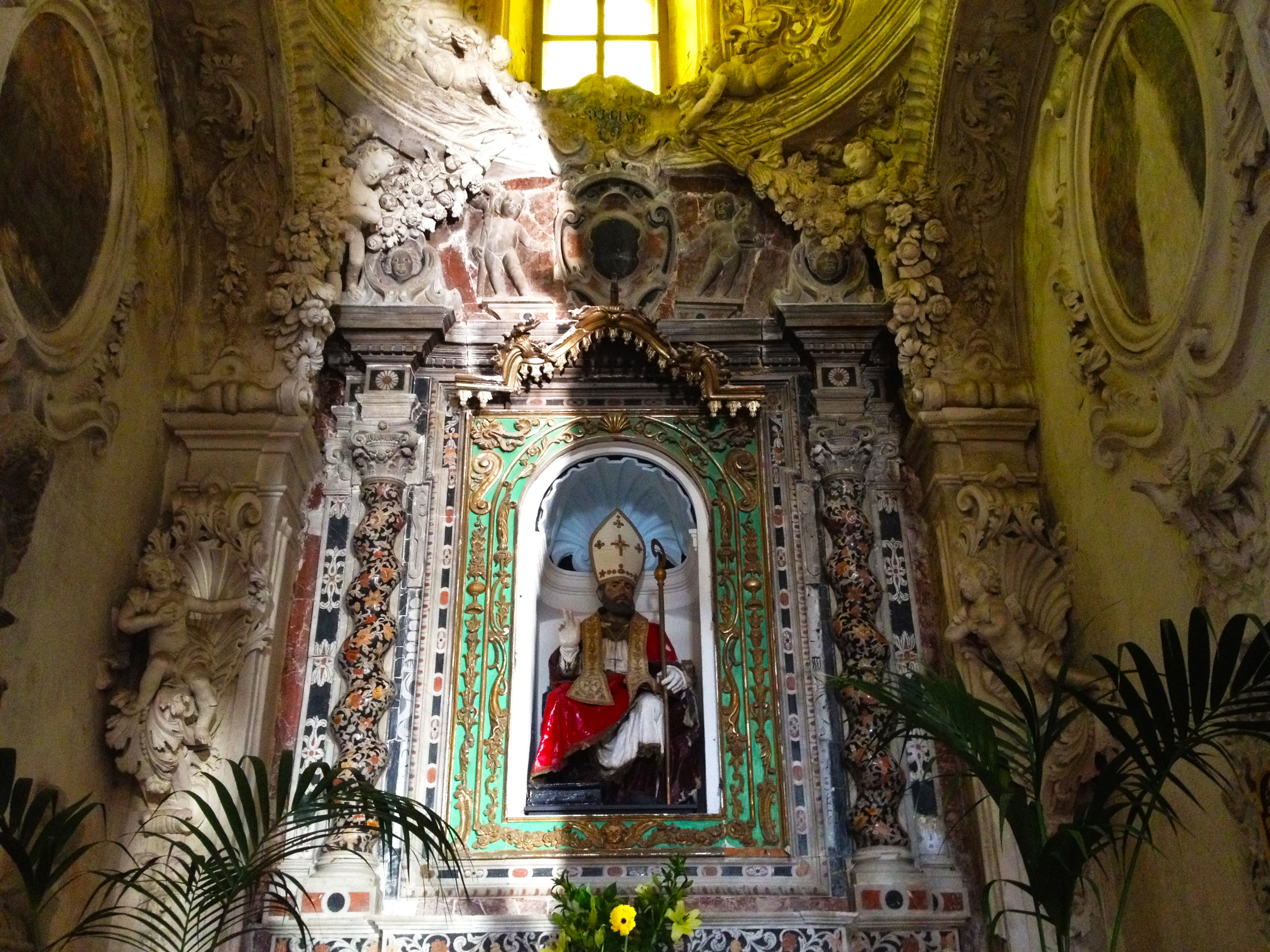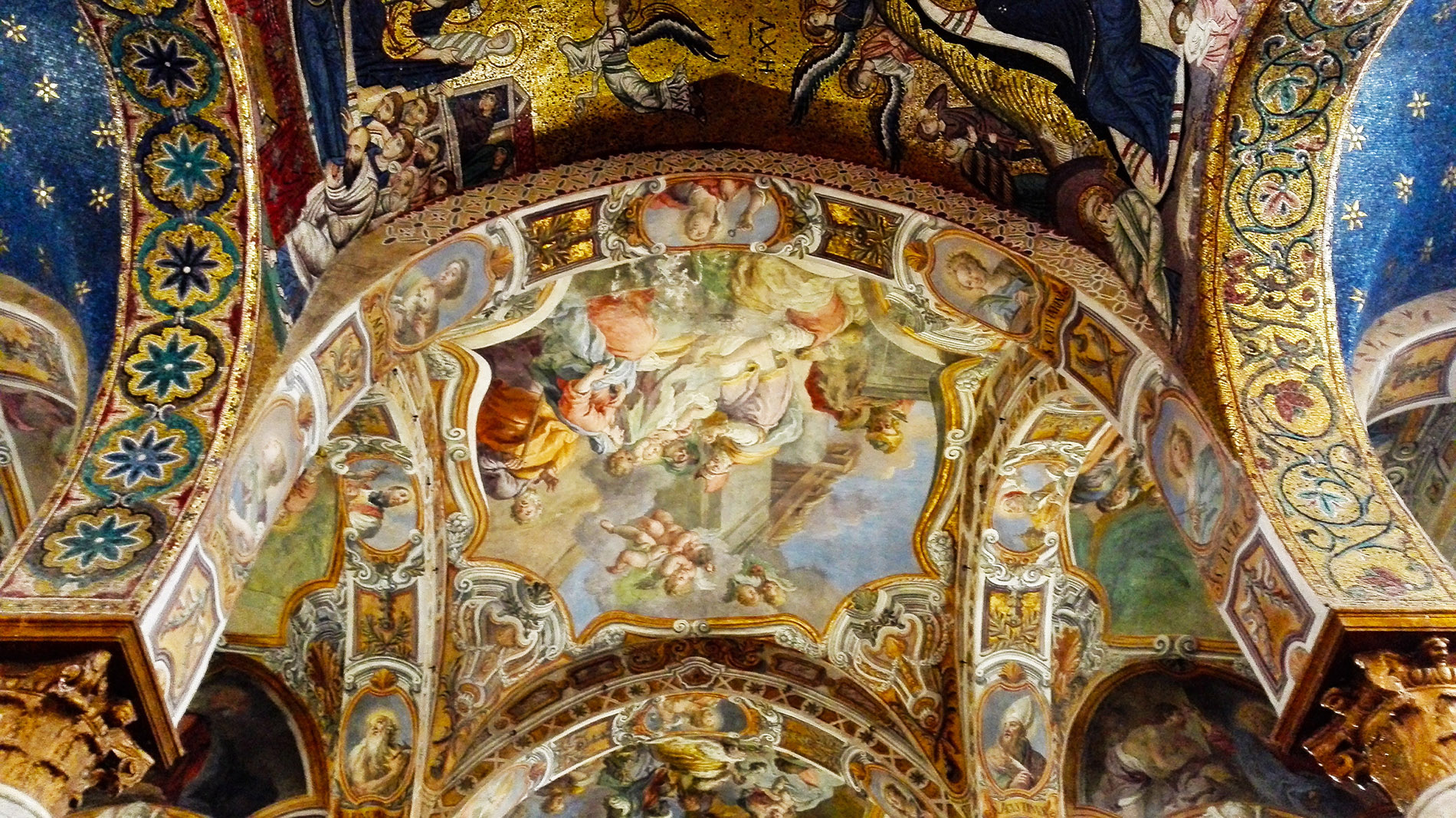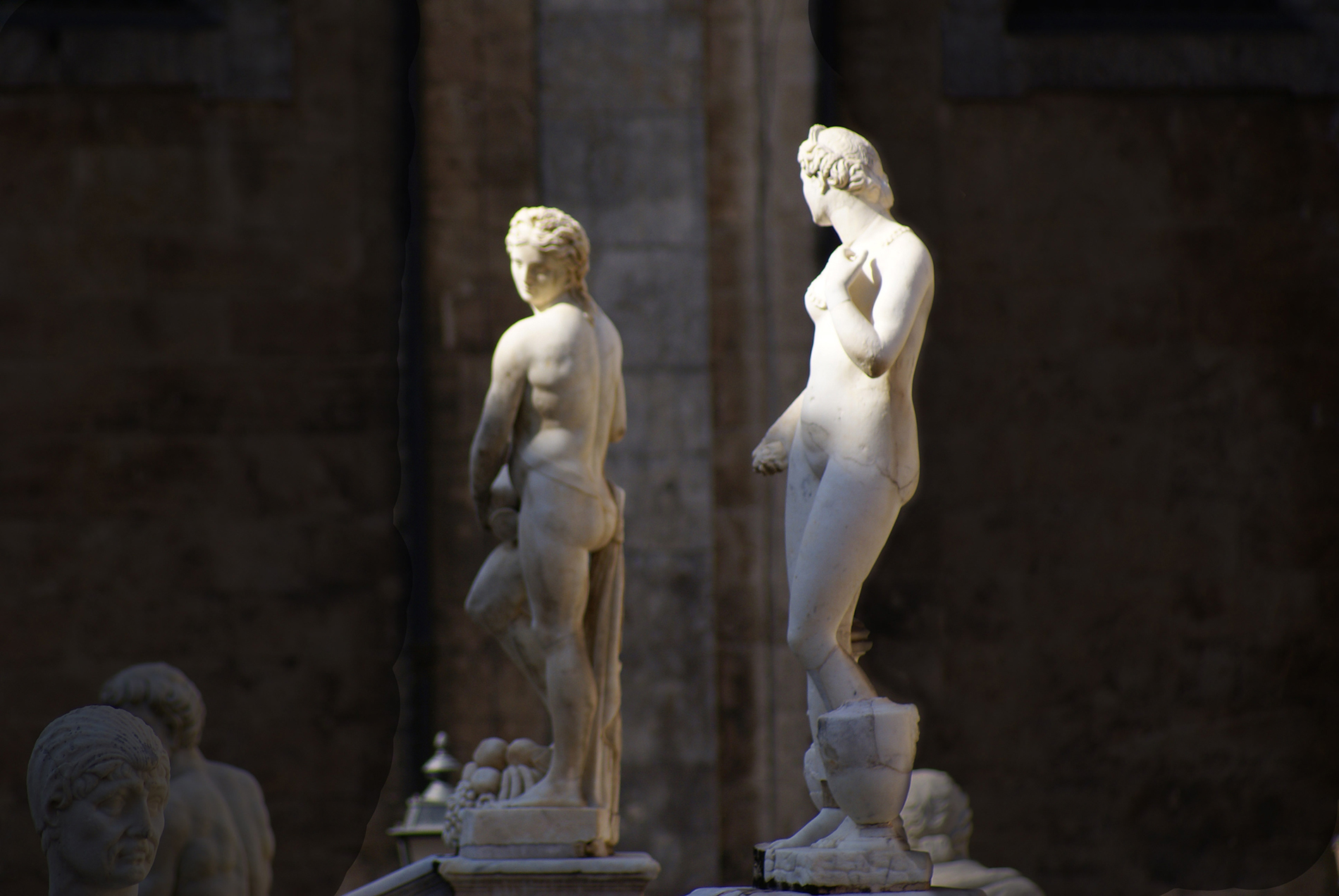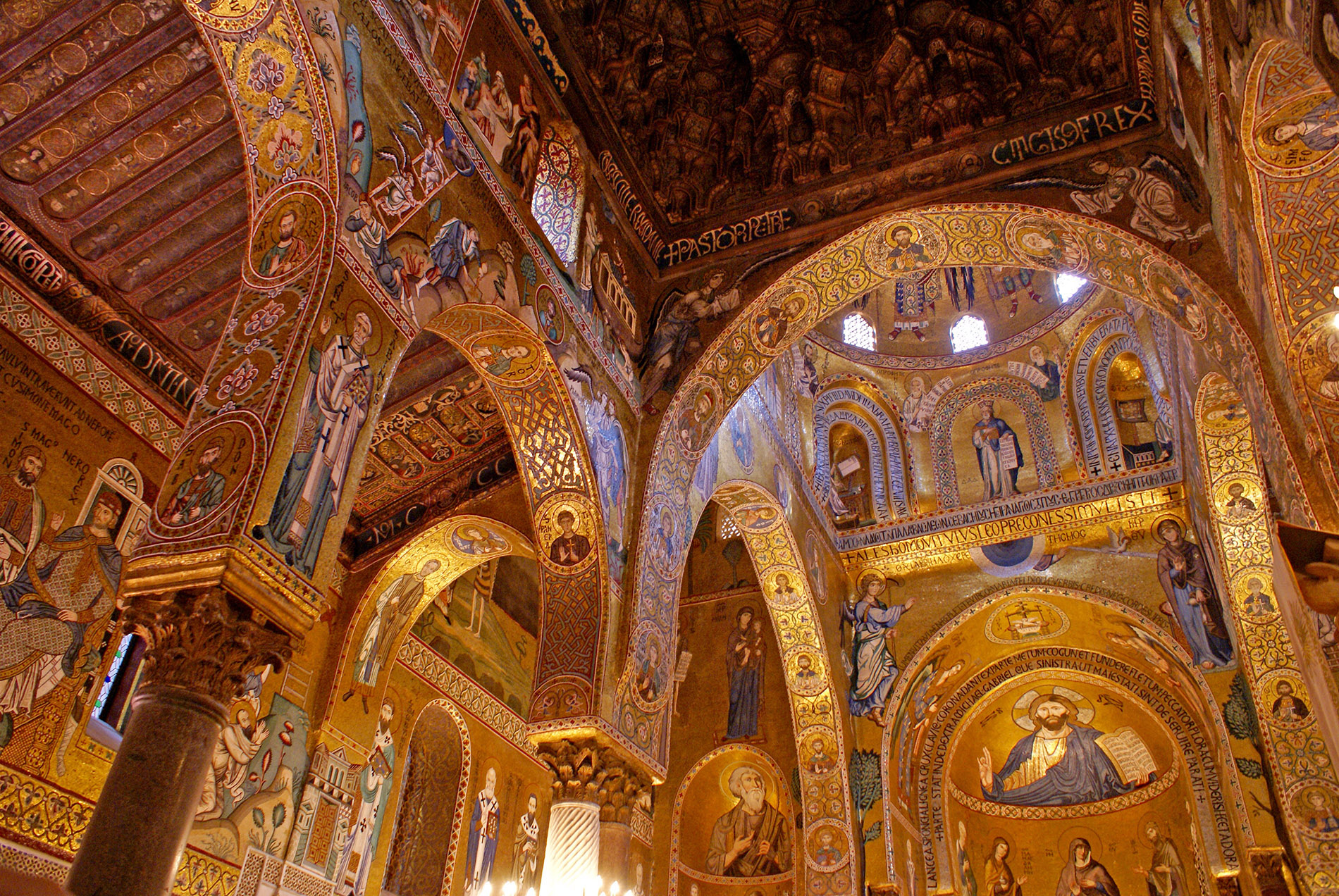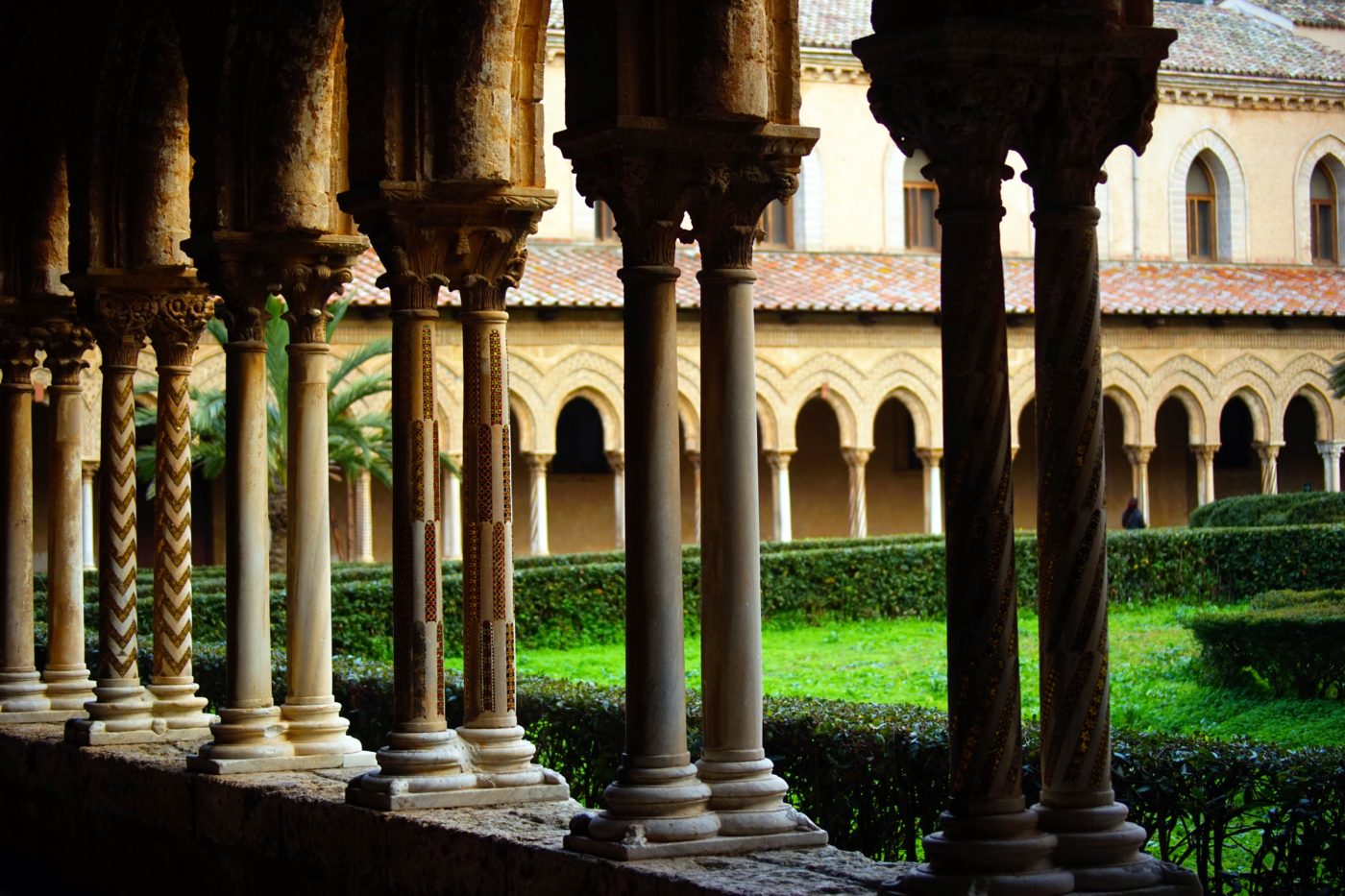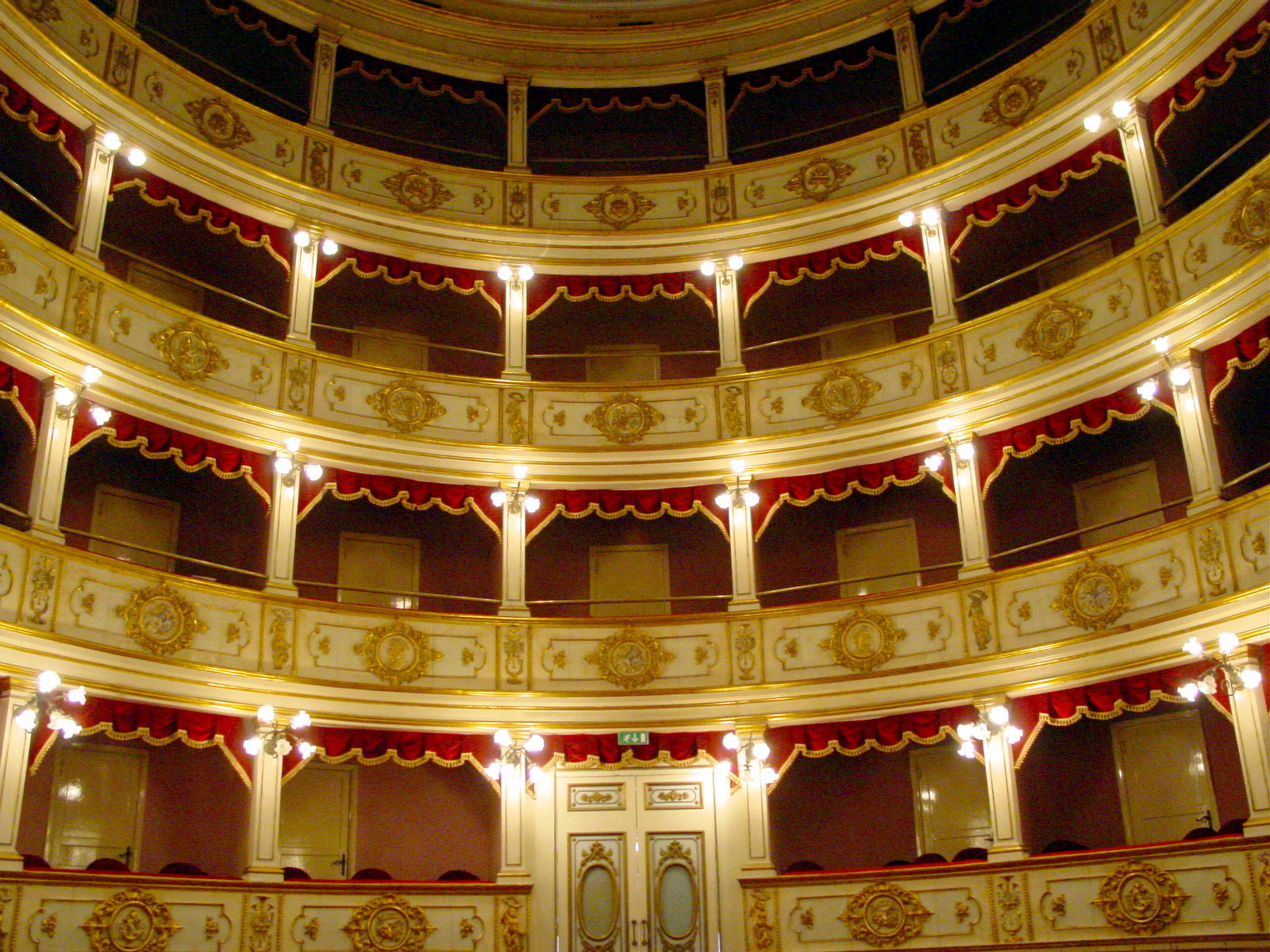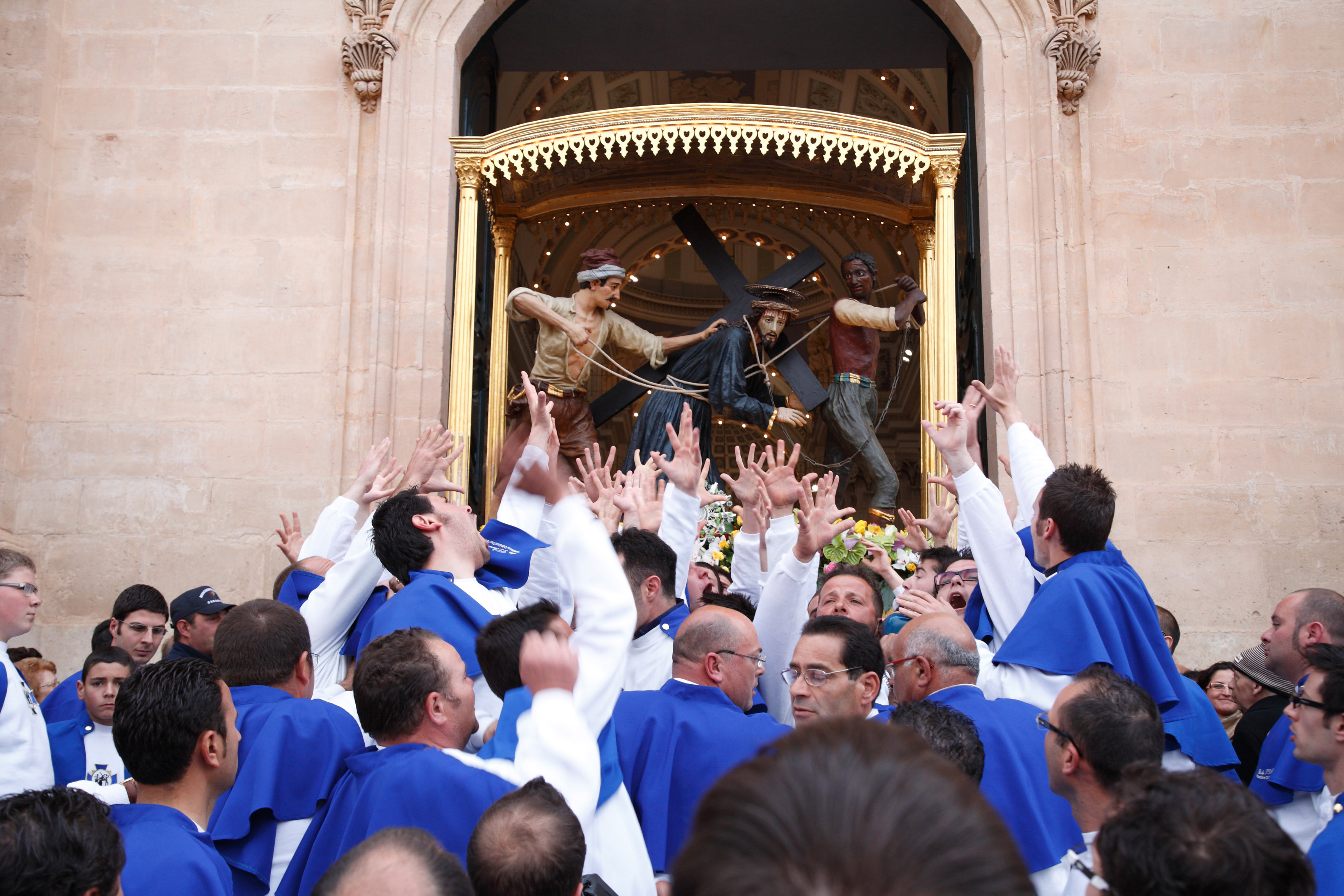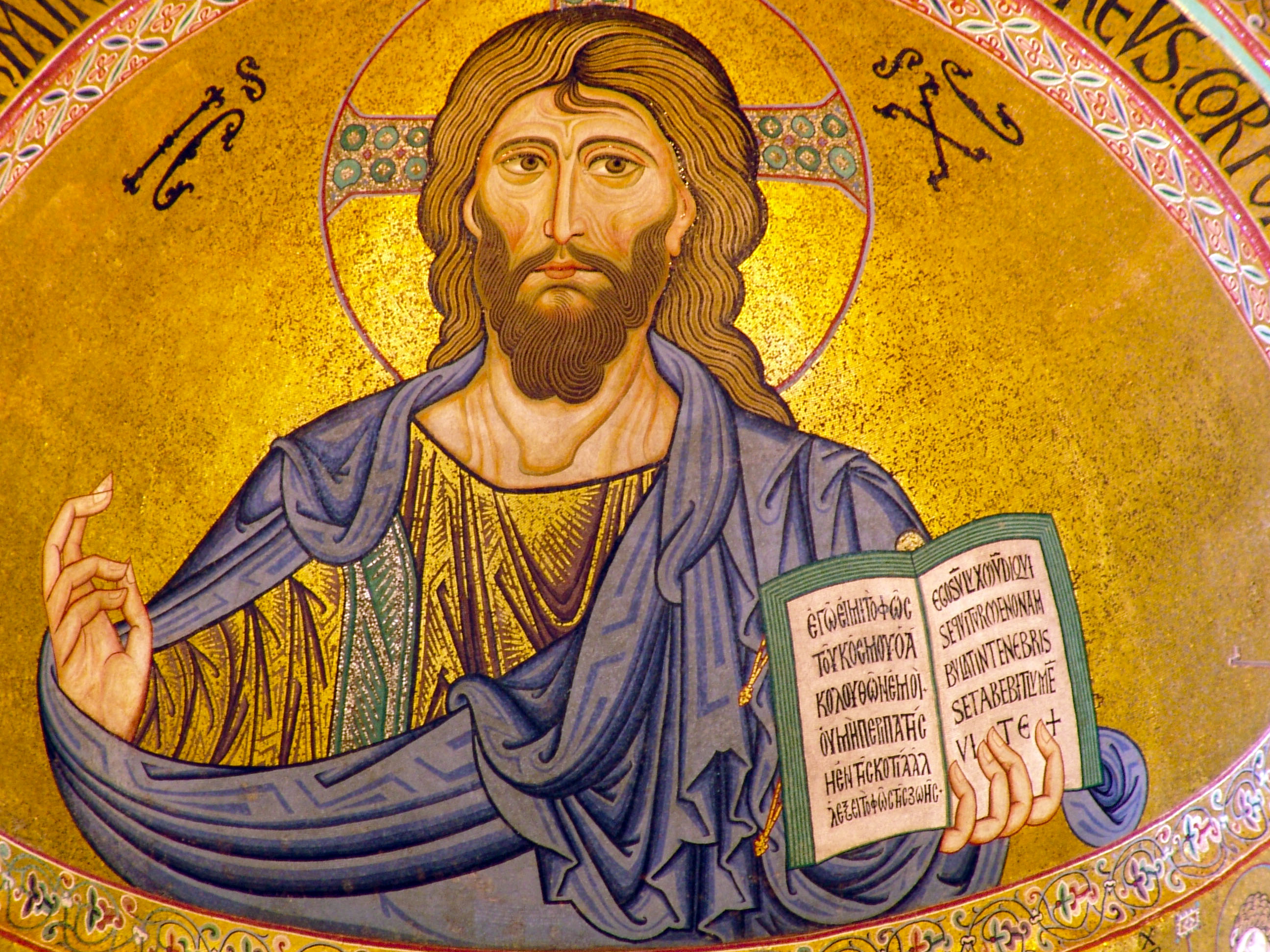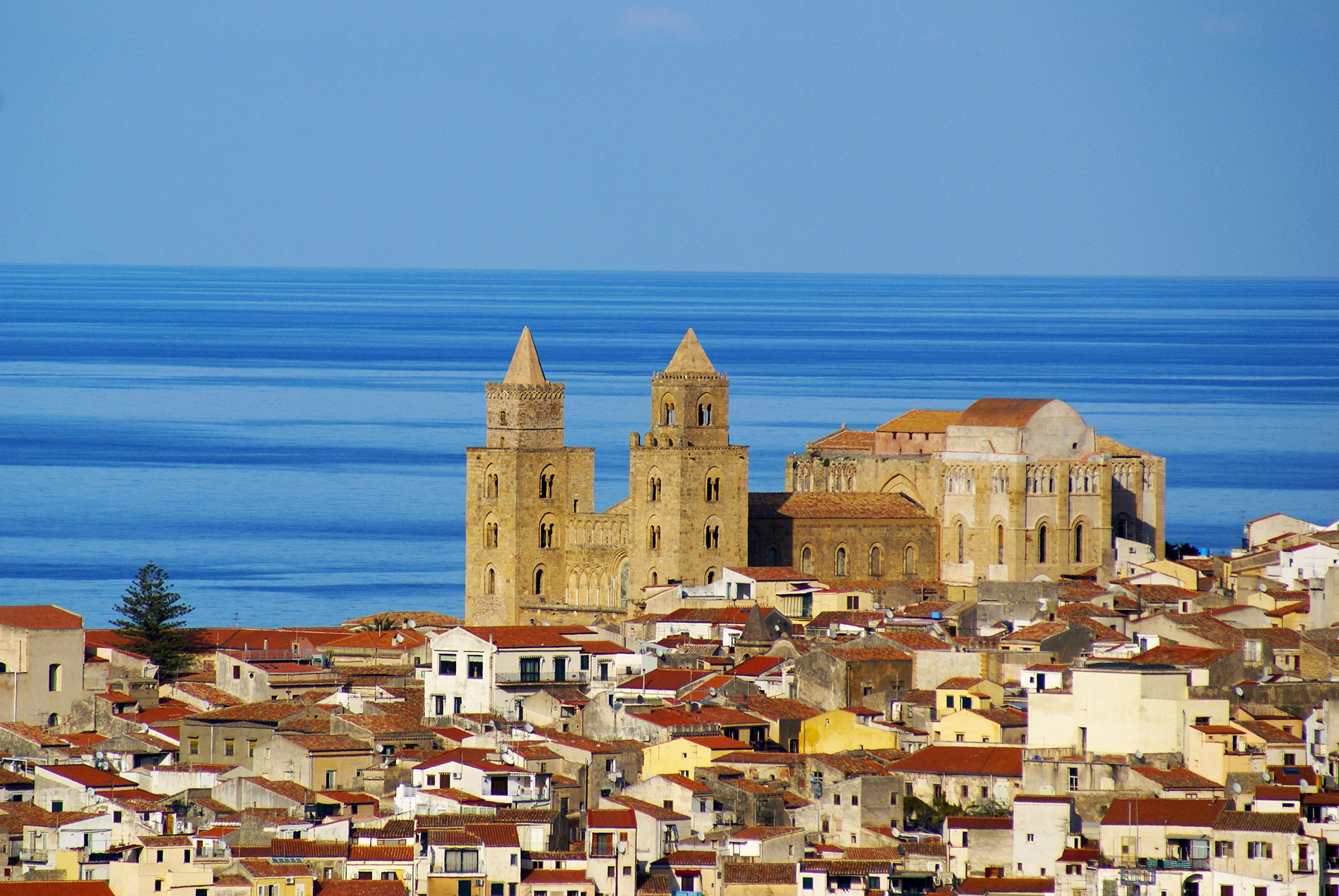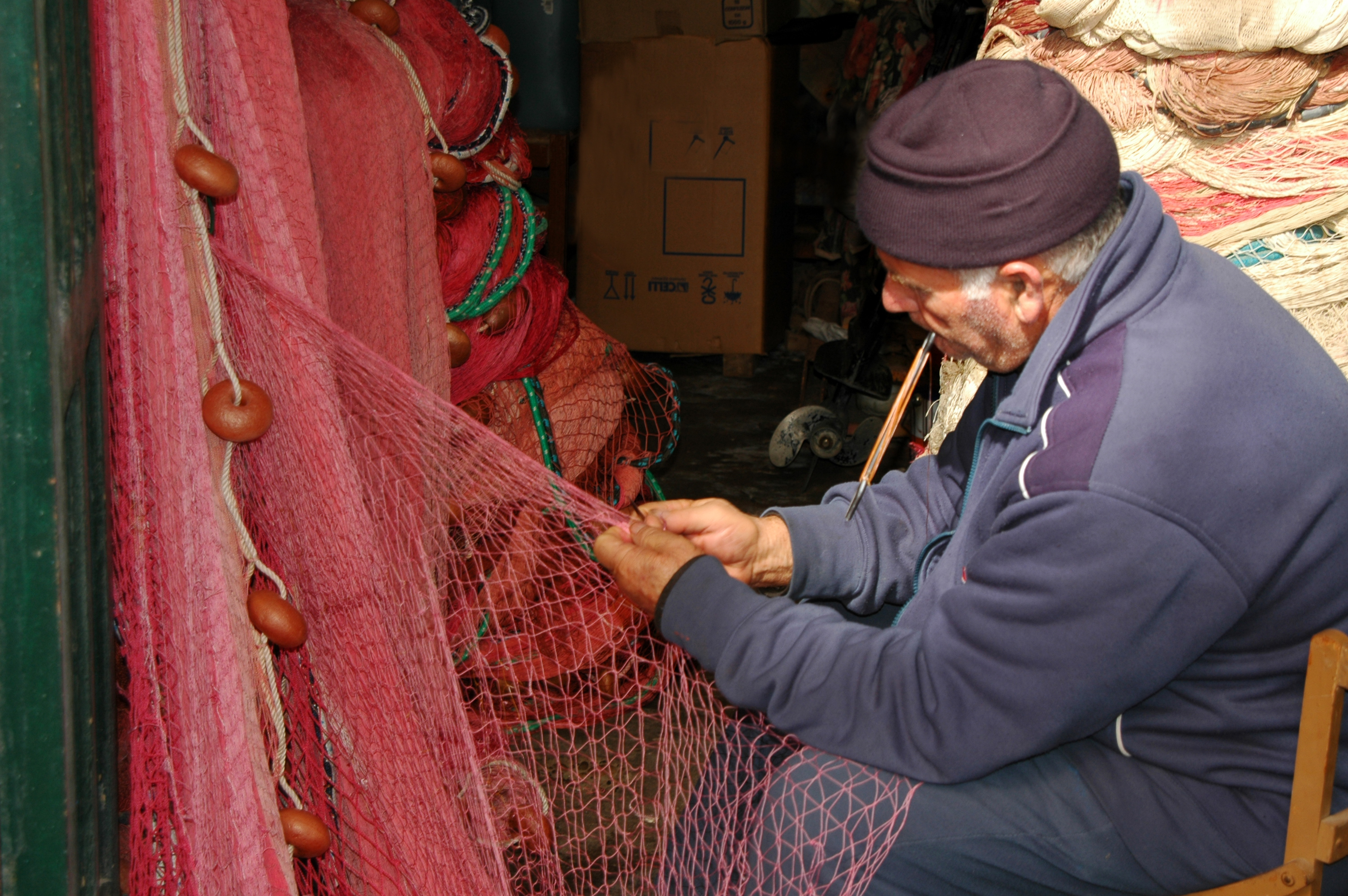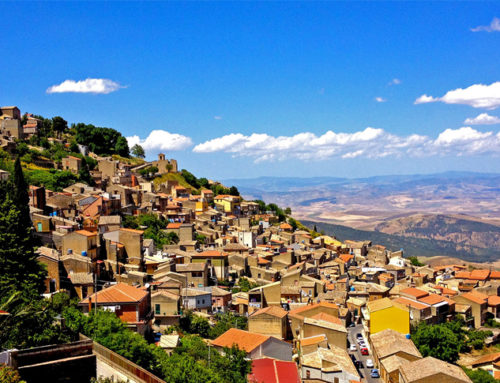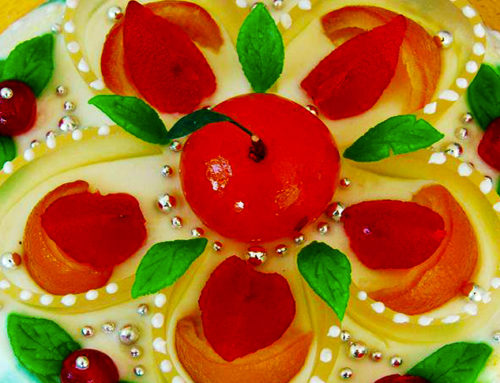Project Description
Food and wine tour – Palermo and Agrigento area
Weekly
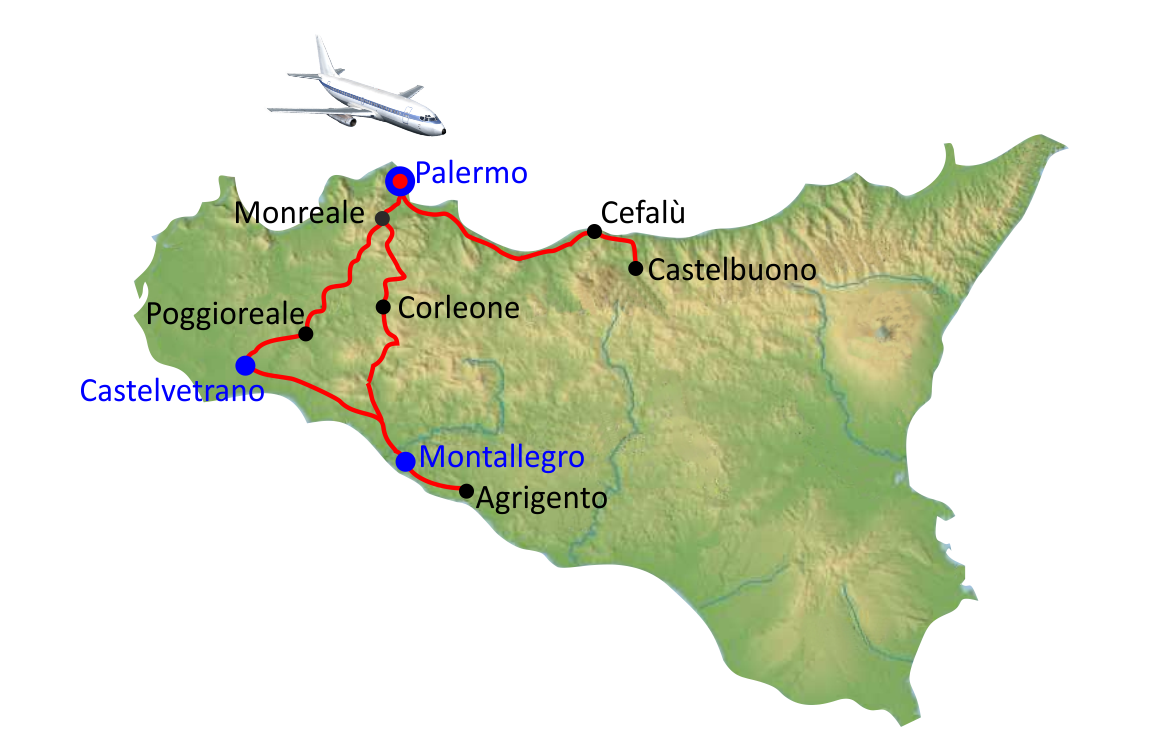
- Arrival in Palermo
- Drive to Poggioreale, ghost town destroyed by an earthquake and unique place
- Continue to Castelvetrano and enjoy the olive tree area and visit San Domenico church, called the small Sistine chapel
- Visit an old local traditional bakery and have a light lunch standing up and tasting the local black bread richly garnished with local olive oil and sun dry tomatoes
- Enjoy a cooking class in an historical noble mansion of Castelvetrano and spent your overnight there
Overnight in Castelvetrano
- Leave your hotel and stop at the local fish market right by the port and choose the fish that a chef will cook for you in the evening
- Drive to Agrigento and have a glimpse at the famous bright stunning white rock called “Scala dei Turchi”
- Continue to Agrigento to visit the Valley of the temple
- Knock on Santo Spirito convent door to get your special Marzipan fruit prepared for you by the nouns still today
- Enjoy a light lunch on your own in the former Arab quarter of the town
- Continue to your hotel in Montallegro to be hosted by one of the most talented chefs in Sicily
- Enjoy a fantastic gourmet dinner
Overnight in Montallegro
- Drive through the most amazing scenic countryside heading to Corleone
- Enjoy a lecture about Mafia run by local brave young people
- Have lunch at the ancient railroad station of Bosco Ficuzza where the Godfather 3 was set.
- Go on a horse back riding experience through the ancient private hunting reserve of Frederick II
- Hotel check in Palermo
- Dine out at local great fish restaurant
Overnight in Palermo
- Walking tour across the four corner area and visit of Martorana, Jewish quarter, Casa Professa and Ballaro’ market.
- Lunch at typical old bakery in Palermo to be introduced into the street food experience
- Visit of Palazzo Mirto and oratories
- Dinner at local high quality gourmet restaurant
Overnight in Palermo
- Visit of Monreale Duomo
- Lunch at typical local bar restaurant
- Afternoon at leisure or shopping in Palermo
- Evening at the local opera house
Overnight in Palermo
- Explore Cefalù, a medieval fishing village and its beautiful cathedral
- Learn about the local traditional ceramic enjoying a demonstration
- Drive to Castelbuono to learn about the Manna and have lunch at local typical Agriturismo
- Enjoy a puppet show and dine out in the area of Piazza Bara dell’ Olivella where only locals go
Overnight in Palermo
- Departure from Palermo
Special features your tour includes:
- 7 Local food experience or interactive moments
- 7 Activities to enjoy authentic Sicily life experiences
- 10 Special places to learn more about local history, art and nature
And if our reasons are not enough…
- Excellent pick if you have been already in Sicily and wish to learn more
- If you are not totally fond to learn only about art and history
- If you wish to learn about way of living, cuisine and any interactive and local culinary experience
- If you want to enjoy unique experiences using local means of transportation
- If you love food in general and wish to learn how to cook well and simply organic food
- If you have Sicilian origins and connections
- If you are not fond of packing and unpacking every day and you rather prefer to go on daytrips from the same hotel
- If you love small boutique hotels and prefer more intimate and a stay taylored to your needs, away from the crowds of large hotels
- If you want to discover every evening a restaurant at your own leisure and choice
- Focus on a small and specific area rather than spreading on the whole island
- Castelvetrano – Black bread tasting in an historical bakery (lunch)
- Castelvetrano – Cooking class in noble mansion (dinner)
- Agrigento – Santo Spirito convent marzipans
- Montallegro – Taylor made gourmet dinner with the local fresh fish
- Palermo – Dinner at local high quality gourmet restaurant
- Palermo – Street food experience (lunch)
- Castelbuono – Manna tasting
- Cefalù – Lunch at typical agriturismo
- Palermo – Walk through the Arab market of Ballarò
- Palermo – Evening at local opera house
- Palermo – Puppet show
- Cefalù – Local ceramic demonstration
- Erice – Cable car ride from Erice to Trapani
- Trapani – Visit the art museum Museo Pepoli
- Trapani – Learn about the local red coral through a demonstration
- Marsala – Enjoy the drive across the salt flats and learn how we get fresh salt
- Corleone – Lecture about mafia
- Corleone area – Horse back ride
- Poggioreale – Ghost town
- Castelvetrano – San Domenico church
- Agrigento – Scala dei Turchi
- Agrigento – Valley of the temples and historical Arab quarter
- Corleone area – Bosco Ficuzza wood and Corleone stunning countryside
- Palermo – Martorana church, Casa Professa church and Jewish quarter
- Palermo – Oratories
- Palermo – Palazzo Mirto
- Monreale – Duomo
- Cefalù – Duomo and medieval fishing village
The history and artistic background of Palermo runs across the whole history of the island and the civilizations of the Mediterranean sea.
The town was founded almost 3000 years ago thanks to the Phoenician with the name of Ziz (flower), then called Panormus by the Romans, while the Arabs called it later on Balarm.
Today Palermo is a magic box full of uncountable art treasures which mixes punic city walls, castles, Arab-Norman churches and residences, baroque churches, neoclassical theatres and Liberty villas.
Encompassed between the sea, the mountains and the fertile back countryside, Palermo is the capital city of the island and summary of any cultural and artistic experience in Southern Italy.
Even though the city appears a bit chaotic and in decadence, this aspects can become a good point for visiting to the eye of a curious traveller especially during the encounter of the people, the fine culinary traditions or the street food which involves all your five senses as you walk along the noisy and vibrant narrow streets of the arab markets of Ballarò and Capo.
The ancient town developes in an area flanked by two rivers (Papireto and Kemonia) and stretching from a high hill (Cassaro from the arab word Qasr, the castle) gently towards the waterfront.
Here Byzantine, Arabs and Normans have left evidence of streets, palaces and especially churches that make Palermo really unique thanks to its blend of styles from Byzantine to Islamic and Normans with no equals in the world.
Arabs, Christians and Jews lived in perfect armony and made Palermo one of the richest cities in the middle age.
The Arab heritage is short (250 years roughly), but one of the most important for the consistent influences that will leave in the art, cuisine, language, architecture even in the following dominators that will be always fascinated and culturally submitted by them.
This is the age of extraordinary Arab-Norman churches and monuments which are built: the duomo of Monreale, the palace of Normans and the Palatine chapel, the cathedral of Palermo, the Martorana and San Cataldo and the castle of Zisa.
In thirteen hundred the Spanish influences bring along the gothic Catalan architecture and as evidence of it today we have palazzo Abatellis, Ajutamicristo and Santa Maria della Catena.
Renaissance in fifteen hundred shows the talent of remarkable artists like Laurana and the Gagini family (Antonello, Domenico e Vincenzo) who leave to the town great sculptures.
In sixteen hundred baroque art developes in Palermo; great and unparalleled artistic vitality spreads out encouraged by the countereformation, the numerous religious congregations and by the huge available richness and money generously provided by the Sicilian noble family who live here and need to show off.
Churches are richly decorated with mix marbles which show beautiful colourful marble inlaid;
Giacomo Serpotta elevates to supreme the level of elegance and perfection thanks to the decorations with stucco designed in the new style of Rococo’.
During this long three century time frame the city center is embellished and enriched with marvellous churches like Casa Professa, San Giuseppe dei Teatini, Santa Caterina and above all the oratories of San Lorenzo and Santa Cita.
In eighteen hundred social habits change in town. Nobility starts to fall in decay and new dynamic social classes as well as new town plan layout express the need of the new artistic experiences normally out of the center of the action in the city center well shown through decorations, furniture and structures of the Liberty villas and its rod iron or flower decorations in stone.
Across the century, Palermo is provided with neoclassical style theatres and opera houses, great representation places for the new fashions and inspirations thanks to Ernesto Basile and its Teatro Massimo which pairs to other operas of the time like the Politeama opera house.
The war conflicts bring economic decadence anywhere and material devastation of entire blocks.
In the eighties Palermo gets benefits from an economic rebirth whose architectural and aesthetic results are quite discussable, while in the last twenty years the city got back a large number of visitors and the deserved consideration despite neglected for a very long time because of negative sterotypes still today hard to eliminate.
Monreale is a small town of about 40.000 inhabitants just outside Palermo on the slopes of a mountain. In the past the territory was a former hunting estate. During the Arab period its strategic position allowed to control the vast flat area at his feet and the name itself Monreale, from the Latin mons regalis, connotes this vocation.
The Normans chose this site to build a church that still can be considered as one of the most beautiful in the world for the richness of its mosaics. They aimed to develope a fortification strategy, defense of the territory and not least Christianization of the island.
According to legend, King William II, in 1170 dreamed the Virgin Mary who revealed to him that a big treasure laid hidden in Monreale and if one day he would have found the site a church dedicated to Our Lady was to be built on that place.
Today the cathedral is located at a high point from which you can see from the outside the imposing apses already by the arrival on the road bends to Monreale; its visible and remarkable outside apse is richly decorated with Arabic stone motifs. Two bronze doors by Bonanno Pisano and Barisano from Trani in 1200 introduced into three internal naves where every corner of the walls is decorated with about 6500 square meters of mosaics made entirely of pure gold.
All the equipment of the mosaics is like in a wide viewing bible scenes of the new and old testament together with episodes of the lives of the saints. The wooden ceiling of chestnut wood is supported by walls and thirteen marble columns and chapels complete the plant.
Among the most interesting mosaic themes the Christ Pantochrator that occupies the entire apse; beside it William II receives the crown from Jesus Christ and another scenes in which William offers the Church to the Virgin. Adjacent to the cathedral is a unique medieval Benedictine monastery which is a masterpiece of Romanesque art.
The capitals are all different from each other with original sculptural technique and extraordinary elegance which makes the place so rich and unique.
Corleone has ancient origins that date back to about 6000 years ago. It is located about an hour from Palermo in a region characterized by an extraordinary campaign that has no equal in Sicily. The scenic road that leads to the town through cornfields, vineyards and mountains where you can enjoy still today the genuinity of the rural Sicilian countryside as it was perhaps up to a hundred years ago elsewhere.
Here the human presence is not invasive and somehow discrete; animals, cultivated fields and nature are the masters of the landscape. Corleone is located at a strategic point of passage on the road that once linked Palermo to Agrigento constituting ideal territory for businesses and crops of wheat from the Roman period to the Byzantine and across the Arabic time.
The geological formations, canyons, rocky landscape and the abundance of wildlife makes the Corleonese countryside a truly unique place to hang out. Among the most interesting places in the Ficuzza wood, a private hunting estate at the time of Frederick II of Swabia through the Bourbons in eighteen hundred.
It would be a mistake to label Corleone as a place connected only to the well known mafia. The hospitable and warm attitude of its people, the quality of food (meats and cheeses) and rural places makes it a very fascinating place.
Erice is located about 750 metres above sea level, on the western coast of Sicily and sits on a huge rock which in the past was considered a sacred place of worship. Here, the sailors of all ages had a visual landmark coming from the sea and the cult of Venus Erice became widespread in ancient times, first among the Phoenicians, then the Greeks and finally the Romans
A magical place, a medieval town in stone with a triangular town layout entirely fortified and with three twn gates to defend the city placed in a strategic point. Here the Normans built on Mount San Giuliano, in the highest point on the rock one of the symbols of the town along with the many stone churches, including the Mother Church located near Porta Trapani.
The narrow streets, small courtyards inside the small stone houses, craft shops, squares, medieval arches and ancient churches make Erice a must-see, especially if you take all the way to the gardens and the castle where there is a viewpoint, one of the most beautiful in Sicily that covers the views of the entire west coast towards the salt flats of Marsala and as far as Mazzara.
The place is renowned for its cuisine of couscous fish, sweet almond and the local craft that is based on a consitente production of ceramics.
The city is the most western point of Sicily and one of the two closest to Africa in Italy together with Mazara del Vallo. The city is world famous for its Marsala wine. In Sicily we use to drink it with a sweet cannoli rather than use it for cooking as commony known overseas.
The surrounding territory and lands are characterized by agriculture and viticulture.
Marsala is a city rich in history. Here Garibaldi landed starting the Unification of Italy in 1860 with a thousand soldiers. The Phoenicians chose this place as a trading post and then became one of the most important colonies of the Punic world. The Romans left important traces in the urban setting in cardi and decumani (side and main streets), while the Arabs gave the name to the city of Marsala, which means the port of Allah or Mars Allah and it well describes his vocation today.
The old town is very elegant and has a mother church and a square among the most elegant of Sicily as well as a museum of very fine tapestries. Finally, do not miss a visit to the Punic ship museum housing a seventh-century BC ship well preserved and numerous relics and mosaics of the later Roman period.
Cefalù is a medieval fishing village that overlooks the coast of the Tyrrhenian Sea about an hour from Palermo. The city is dominated by a castle that originated the name Cefalù that would result from Kefalos Greek word that means brain or head to indicate the imposing medieval rock over the town; here they lie well preserved the ruin of a greek temple dedicated to the goddess Diana and the fortifications of a Arab castle. The city has a network of very narrow medieval streets and the main square slopes gently towards the sea and one of its gates giving access to the sea, the “porta Pescara”. This overlooks a secluded sandy cove surrounded by rocky cliffs overlooked by small houses, shops and restaurants.
Not far away there is the medieval washhouse of Arab origin, which uses the water of a stream that women used to wash clothes until the fifties. The town has an atmosphere that literally invites you to get lost in its narrow streets and maybe admire its fourteenth-century architecture, watch the fishermen cleaning the nets, its dozens of views and especially the extraordinary cathedral which stands majestically at the highest point of the city.
The church was built during the reign of the Norman King Roger II in 1131 as a result of a vow made to the Madonna if she had saved Roger’s and the lives of the sailors and the fleet during a storm off the coast of Cefalu.
The cathedral was built with two mighty towers, three naves and with the project of decorating all the mosaic walls. For reasons still not clear, only the apse was covered with gold mosaics and among the most beautiful stand out figures of saints, patriarchs, Archangels dominated by the figure of Christ blessing or Pantochrator.
The city and the whole area are very popular for the production of ceramics and the opportunities they offer for bathing and good seafood at the local beach restaurants.
The foundation of the town of Agrigento dates back to ancient Greek time.
A group of settlers moved here coming from Gela. The glory of the town was described by the historians of the time as one the most beautiful of the ancient Greek world and the temple we see today were just a part of a grandiose plan.
The town had thirteeen kilometres of city walls and several gates, two agora and a sacred area rich of temples. The remaining of those temples are today a Unesco site from 1997, one of the most visited archeological sites in Sicily.
The park has an extension of 1300 hectars, ten doric style temples, three sancutaries and several necropolis that cover from the Greek to the paleocristian time. The aercheological museum collects statues, pieces of the temples, sarcofagus, potteries and other artifacts which narrate the history of the town from the age of the Sicanian to the Roman time, covering more than 1500 years of local history.
After the golden age of Akragas, the town was ruled by the Romans first, then Byzantine and Arabs which changed the name into Kerkent. The Normans provided the town with churches, palaces and other monuments and gave the town the name of Girgenti. In the following centuries it never got back the splendor of the ancient Greek times and its history and events followed the course of the rest of the island.
In 1900 Luigi Pirandello, an important playwriter, dramatist and novelist lived here getting the nobel prize for literature.
Agrigento today lives of farming, wine and fishing. The Valley of the temples shows the grandiosity of the past through its best temples mostly dating back to the fifth century BC.
The temple of Concordia is probably the most iconic and well known in Sicily. It is perfectly preserved because it was turned into a church and only recently the non original structures were removed after archeological campaigns.
The temple of Hera or Juno is placed on the highest point of the hill, while the temple of Hercules sits on the lowest point of the sloping ridge with its six columns of the oldest temple of the three.
The area has also other temples, among which the huge temple of Zeus and Castore and Polluce are the most remarkable.
A garden, called Kolimbetra shows us the incredible water engineering tecnique to drive and distribute the water to a vast town that was probably populated with almost 200.000 inhabitants.
The modern town of Agrigento today is located on top of a hill, former part of the ancient Greek acropolis and houses a web of narrow streets which witnesses the Arab soul and setting of the town.
A main street, called via Atenea, is a great place to go for a stroll, do some shopping and have a nice meal.
- Private Sedan car or Mercedes Viano up to seven seats
- Private driver speaking your language
- Fuel, motorway toll and parking fee
- Half day service with private driver and car UP TO 4 HOURS
- Full day service with private car and driver UP TO 8 HOURS
- Water bottle onboard
- Visits, stops and panoramic driving tours described on the itinerary
NOT INCLUDED:
- Archeological sites, monuments and churches entrance fees
- Local products and wine tasting or culinary experiences unless included
- Driver and local guides gratuities (we suggest 10% if services meets or exceeds your expectations)
- Local Sicilian regional licensed guide
- Meals, wine tasting or culinary experiences if not already included in the itinerary
- Yachts, helicopter or private plane rental linked to our ground transportation service
–
or send us a message requesting information, our team will respond as soon as possible.

